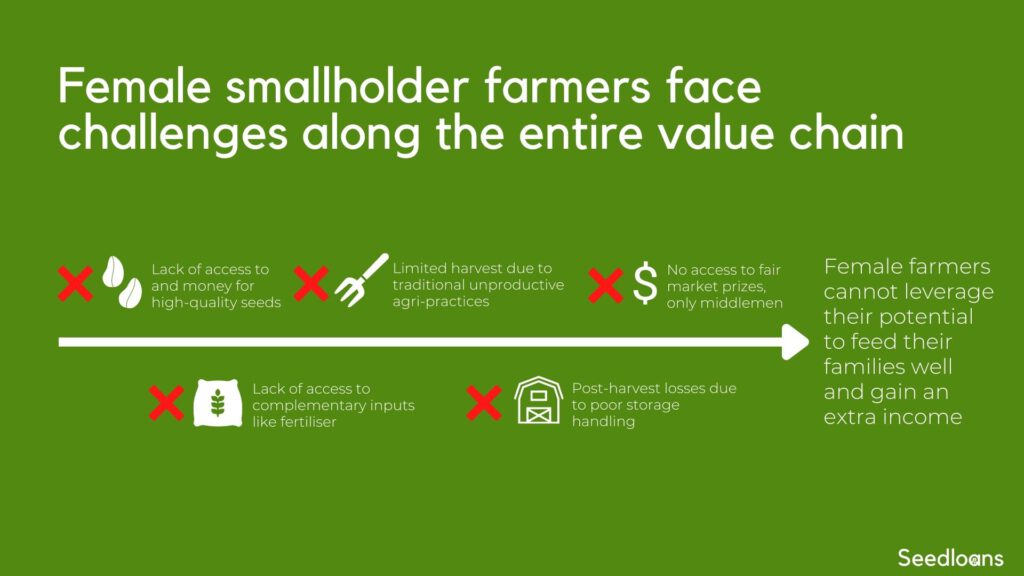The Problem
Low productivity
In sub-Saharan Africa, approximately 60 percent of the population is smallholder farmers¹. They cultivate crops mainly for household consumption and only partially engage in small-scale commercial activities. Around half of these smallholder farmers are expected to live in poverty². Whereas in South Asia crop yield increased by up to 120% between 1970 and 1995, sub-Saharan Africa did not participate in a similar “Green Revolution” and still suffers from low yield per acre of farmland³.
Challenges along the entire value chain
Farmers face challenges along their entire value chain. From lack of access to and financing of improved seeds and fertilizer, only traditional but not developed farming practices, to post-harvest losses due to insufficient storage solutions and unfair market prizes through middlemen to sell their harvest⁴. Solving these challenges of African smallholder farmers has the potential to lift millions of people out of malnutrition and poverty.
Gender inequality
In addition to the overarching smallholder challenges, female farmers face gender inequality in their communities and society. It is estimated that if women would have the same access to productive resources as men, they could increase yields on their farms by 20-30 percent, lifting their families out of hunger. Women are the quiet drivers of change towards more sustainable production systems and a more varied and healthier diet⁵.
[1] McKinsey Insights. Winning in Africa’s agricultural market. 2019.
[2] FAO. The economic lives of smallholder farmers. 2015.
[3] IFPRI. The Asian Green Revolution. 2009.
[4] Joint Research Centre, European Commission. Smallholder Farmers’ Access to Inputs and Finance in Africa. 2020.
[5] FAO. Smallholders and family farmers. 2013

